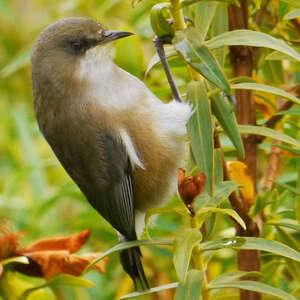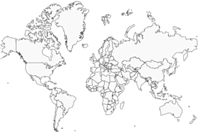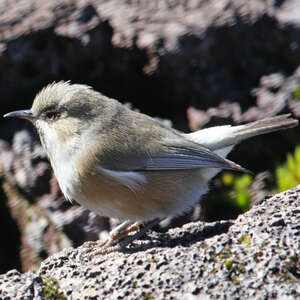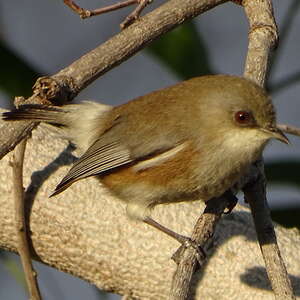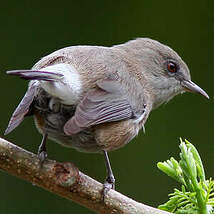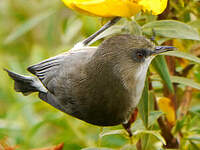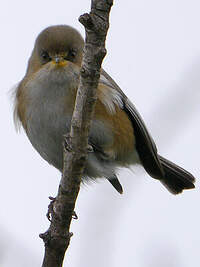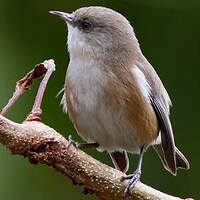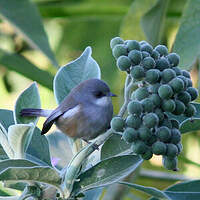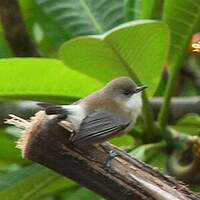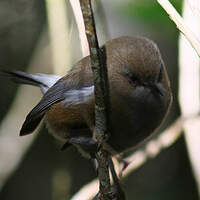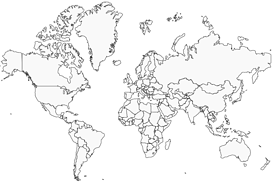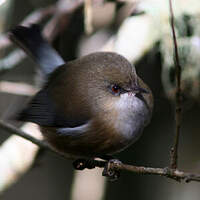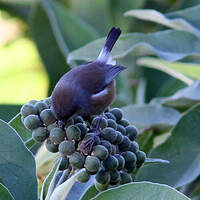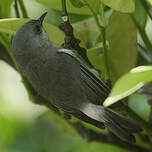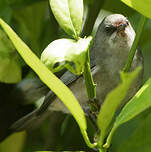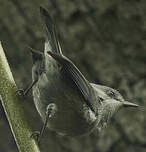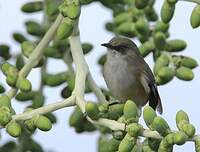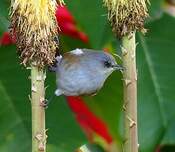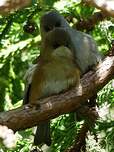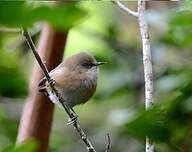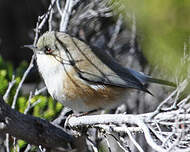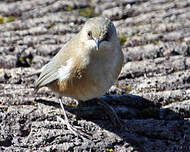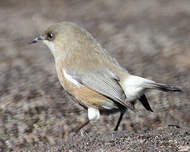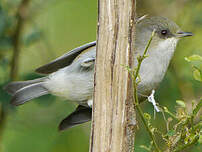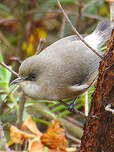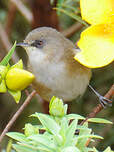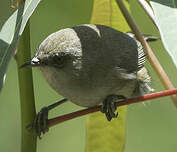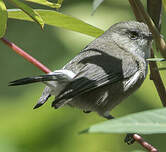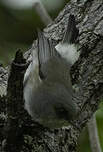Reunion Grey White-eye
Zosterops borbonicus - Zostérops des Mascareignes Zostérops de Bourbon
Identification
The Reunion Grey White-eye is a small ball of feathers the size of a European Goldfinch, with a light gray belly marked with brown on its sides. In this species without sexual dimorphism, the clearly visible white rump and almost white throat earn it its Reunionese name of white bird. The tail is black, the iris brown-red. The head and back vary from one individual to another, from gray to brown.
Subspecific information 3 subspecies
- Zosterops borbonicus borbonicus (n, e slopes of La Réunion)
- Zosterops borbonicus alopekion (central highlands of La Réunion)
- Zosterops borbonicus xerophilus (w coast of La Réunion)
Foreign names
- Zostérops des Mascareignes,
- Anteojitos gris de Reunión,
- olho-branco-cinza-da-reunião,
- Réunion-Graubrillenvogel,
- réunioni pápaszemesmadár,
- Grijze Réunionbrilvogel,
- Occhialino delle Mascarene,
- rostsidig glasögonfågel,
- Hvitgumpbrillefugl,
- okánik réunionský,
- kruhoočko maskarénské,
- Brunrygget Brillefugl,
- reunioninharmaarilli,
- zostèrops de les illes Mascarenyes,
- szlarnik białorzytny,
- Маскаренская белоглазка,
- マスカリンメジロ,
- 留尼汪灰绣眼鸟,
- 灰繡眼,
Habitat
Behaviour character trait
Flight
Dietfeeding habits
Reproduction nesting
The Reunion Grey White-eye is neither territorial nor truly colonial: couples settle at short distances from each other without defending a territory, but there are not true colonies.
This relatively gregarious behaviour encourages babysitting behaviour, where non-breeding individuals (often the young of the previous brood) help the adults in feeding their chicks.The nest in the form of a deep cup is located at the fork of a low branch. The two or three eggs are incubated for about ten days, then the adults feed the young in the nest for two weeks. After the flight, the feeding is fairly brief (a few days), however the gregariousness of the species can be seen in the behaviour of the young, who follow their parents for several months.
Geographic range
Threats - protection
IUCN conservation status
concern
in the Wild
threatened
evaluated
The Reunion Grey White-eye is the only endemic bird of Réunion whose population has not been greatly affected by human development, in particular deforestation. It remains very common and is protected.
Sources of information
- IOC World Bird List (v14.1), Gill, F and D Donsker (Eds). 2024-04-18.
- Encyclopédie des oiseaux de France (fiches), Collectif - Rédaction NICOLLE Serge
Other sources of interest
 Specification sheet created on
03/08/2023 by Renan Levaillant
Specification sheet created on
03/08/2023 by Renan LevaillantTranslation by AI Oiseaux.net
published: 29-08-2013 - Updated: 30-08-2013
© 1996-2024 Oiseaux.net
- Accipitriformes
- Aegotheliformes
- Anseriformes
- Apodiformes
- Apterygiformes
- Bucerotiformes
- Caprimulgiformes
- Cariamiformes
- Casuariiformes
- Charadriiformes
- Ciconiiformes
- Coliiformes
- Columbiformes
- Coraciiformes
- Cuculiformes
- Eurypygiformes
- Falconiformes
- Galliformes
- Gaviiformes
- Gruiformes
- Leptosomiformes
- Mesitornithiformes
- Musophagiformes
- Nyctibiiformes
- Opisthocomiformes
- Otidiformes
- Passeriformes
- Pelecaniformes
- Phaethontiformes
- Phoenicopteriformes
- Piciformes
- Podargiformes
- Podicipediformes
- Procellariiformes
- Psittaciformes
- Pterocliformes
- Rheiformes
- Sphenisciformes
- Steatornithiformes
- Strigiformes
- Struthioniformes
- Suliformes
- Tinamiformes
- Trogoniformes

